Missing Darwin notebooks returned to Cambridge University Library
Charles Darwin’s iconic Tree of Life notebooks anonymously left in a pink gift bag, 15 months after launch of a worldwide appeal to find them
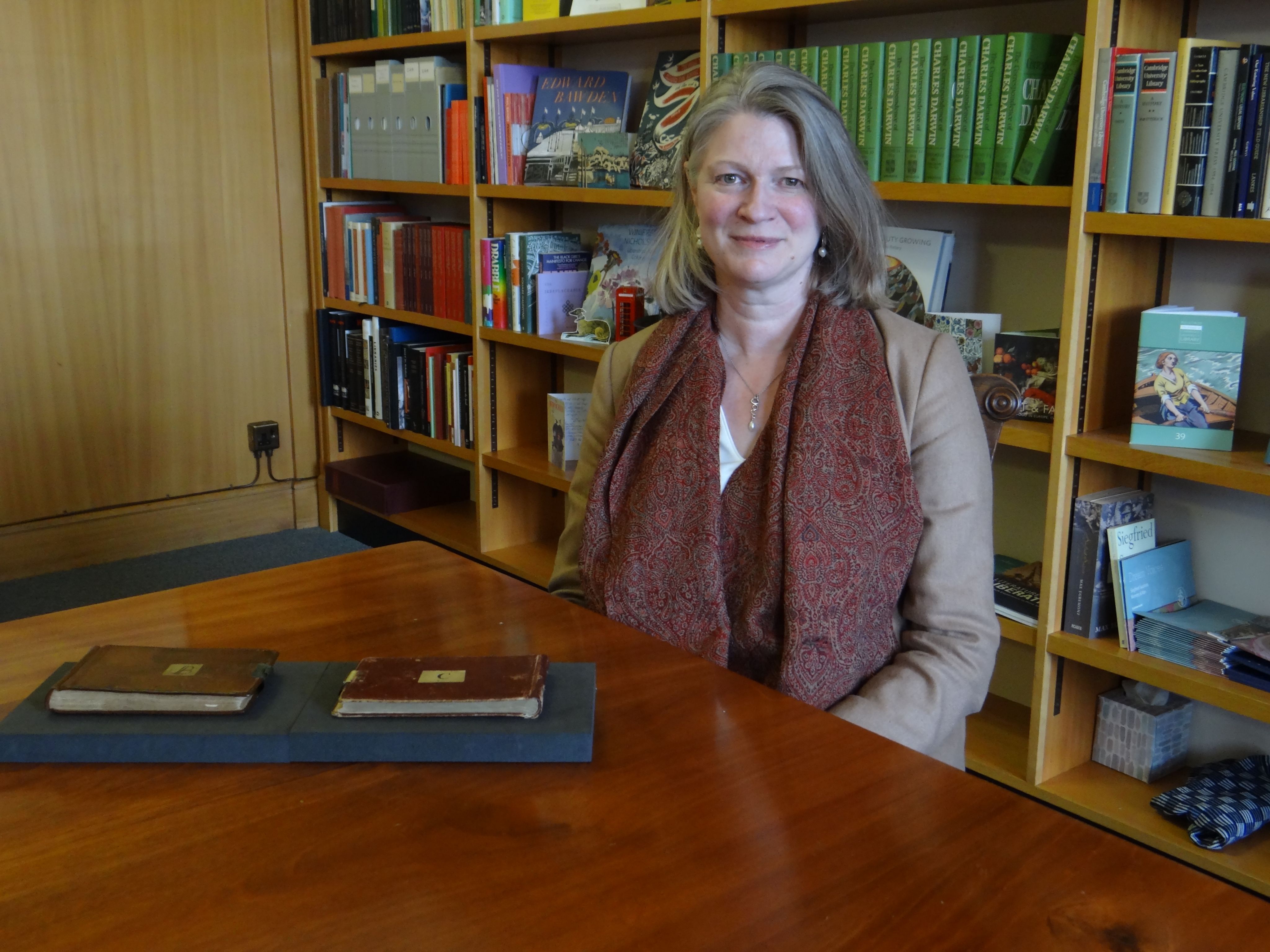
Two notebooks belonging to Charles Darwin, one of which contains his iconic 1837 ‘Tree of Life’ sketch, have been safely returned to Cambridge University Library, more than two decades after first being reported missing.
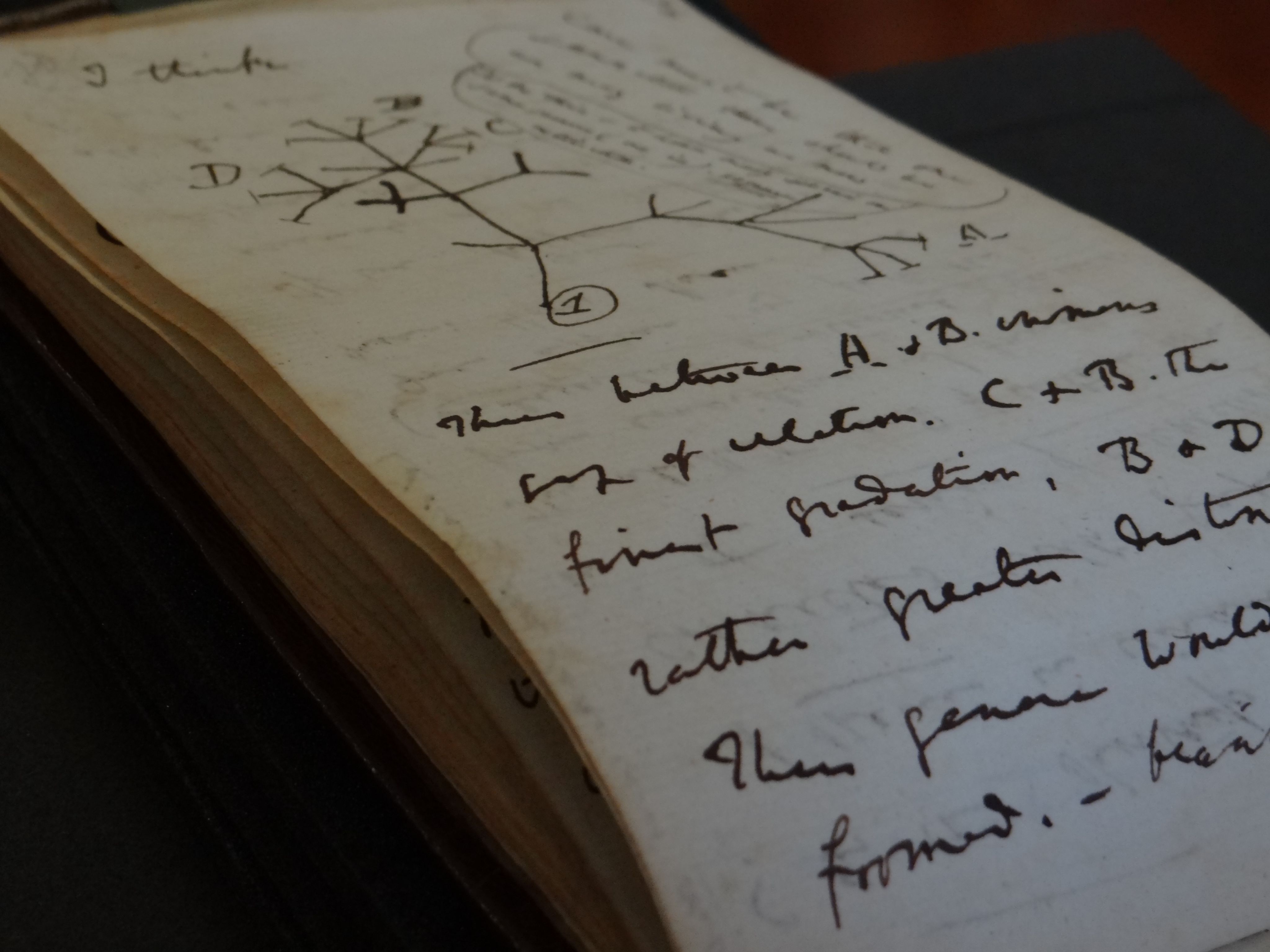
A page from Darwin's 1837 notebook showing the Tree of Life sketch. Photo: Stuart Roberts
A page from Darwin's 1837 notebook showing the Tree of Life sketch. Photo: Stuart Roberts
Their return comes 15 months after Cambridge University Librarian Dr Jessica Gardner launched a worldwide appeal for information, in partnership with Cambridgeshire Police and Interpol.
The notebooks were returned anonymously to the Library on March 9, 2022, and are in good condition, with no obvious signs of significant handling or damage sustained in the years since their disappearance.
They were returned in a bright pink gift bag containing the notebooks’ archive box and inside a plain brown envelope addressed to the University Librarian with the printed message:
Librarian
Happy Easter
X
The notebooks, which were wrapped together in cling film, were left on the floor in a public area of the library outside the Librarian’s office – on the fourth floor of the 17-storey Tower.
The police investigation around the notebooks’ disappearance and subsequent return is ongoing.
The original public appeal was shared around the world, generating thousands of news articles and reaching hundreds of thousands through social media.
Recognising the huge popularity of this material, and as thanks for this global effort to find the missing notebooks, Cambridge University Libraries will be putting the notebooks on display from July, as part of the upcoming free exhibition Darwin in Conversation, which opens on July 9.
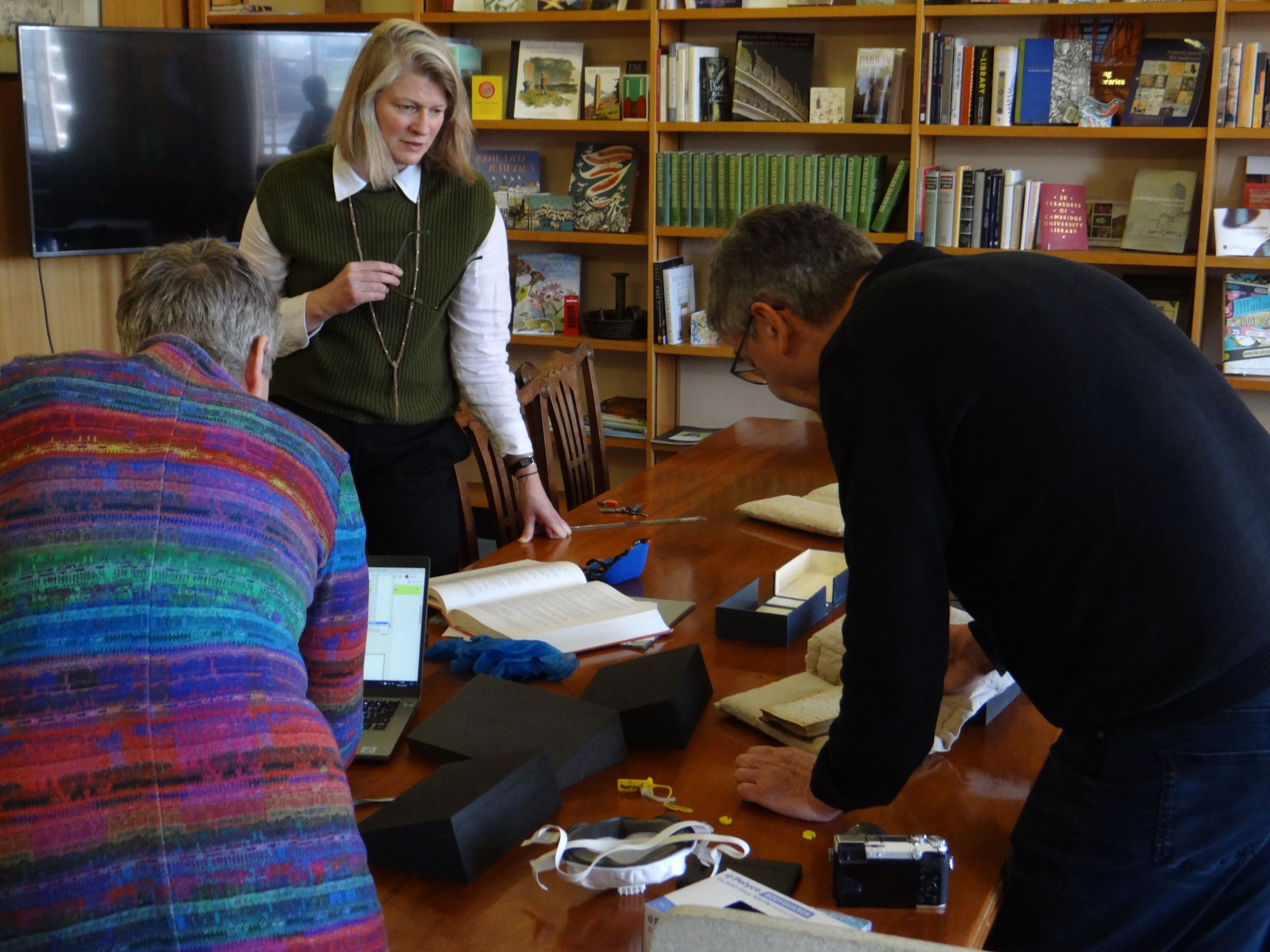
"My sense of relief at the notebooks’ safe return is profound and almost impossible to adequately express.
"Along with so many others all across the world, I was heartbroken to learn of their loss and my joy at their return is immense.
"The sole aim of our public appeal was to have the manuscripts safely returned to our safekeeping and I am delighted to have had such a successful outcome in such a relatively short space of time.
"The notebooks can now retake their rightful place alongside the rest of the Darwin Archive at Cambridge, at the heart of the nation’s cultural and scientific heritage, alongside the archives of Sir Isaac Newton and Professor Stephen Hawking.
"Everyone at the Library was incredibly touched by the response to our appeal and to know that so many others felt the same sense of loss we did only reaffirmed our decision to ask the public for their help.
"We believe that decision has had a direct bearing on the notebooks being returned and we’d like to take this opportunity to give the public our heartfelt thanks.
"That’s why we’re also thrilled to be able to be able to put the notebooks on display this summer, to give everyone the opportunity to see these remarkable notebooks in the flesh.
"They may be tiny, just the size of postcards, but the notebooks’ impact on the history of science, and their importance to our world-class collections here, cannot be overstated."
Dr Jessica Gardner, Cambridge University Librarian
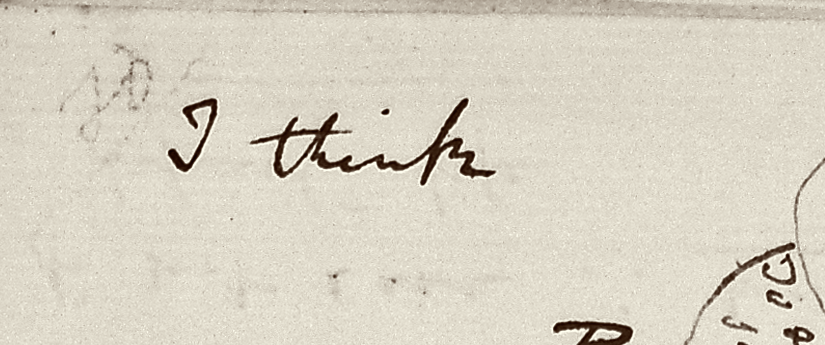
The notebooks were originally removed from the Special Collections Strong Rooms – where the rarest and most valuable items are kept – for photography to take place at the Library in September 2000, with the photography request completed in November 2000.
During a subsequent routine check in January 2001, it was found that the small box containing the two notebooks (which is about the size of a paperback book) had not been returned to its proper place.
For many years, previous University Librarians believed that the notebooks had been misplaced in the vast storerooms and collections of Cambridge University Library – which is home to around ten million books, maps, manuscripts and other objects. Despite a number of searches over the intervening years, they remained undiscovered.
At the start of 2020, a new search – the largest in the Library’s history – was arranged by Dr Gardner involving specialist staff assigned to search specific zones of the library’s storage facilities.
It was led by an expert team, conducting fingertip examinations where necessary, and included a complete check of the entire Darwin Archive, comprising 189 archive boxes. However, this failed to locate the notebooks, leading to the conclusion, with the help of national experts in cultural heritage theft and recovery, that they had likely been stolen.
Added Dr Gardner: "The building has transformed significantly since the notebooks were first reported as missing. In the last 20 years this has included completion of new high security strong rooms, new specialist reading rooms and a range of additional security measures.
"These include CCTV, card-and-pin access to secure areas, a dedicated Security Team onsite and further root-and-branch reviews of all our security protocols to come – to make sure we minimise any future risk as far as humanly possible."
A Cambridgeshire Police spokesman said: "We share the university’s delight that these priceless notebooks are now back where they belong. Our investigation remains open and we are following up some lines of inquiry. We also renew our appeal for anyone with information about the case to contact us. Anyone with information should call 101 and quote reference 35/71468/20 or contact us online."
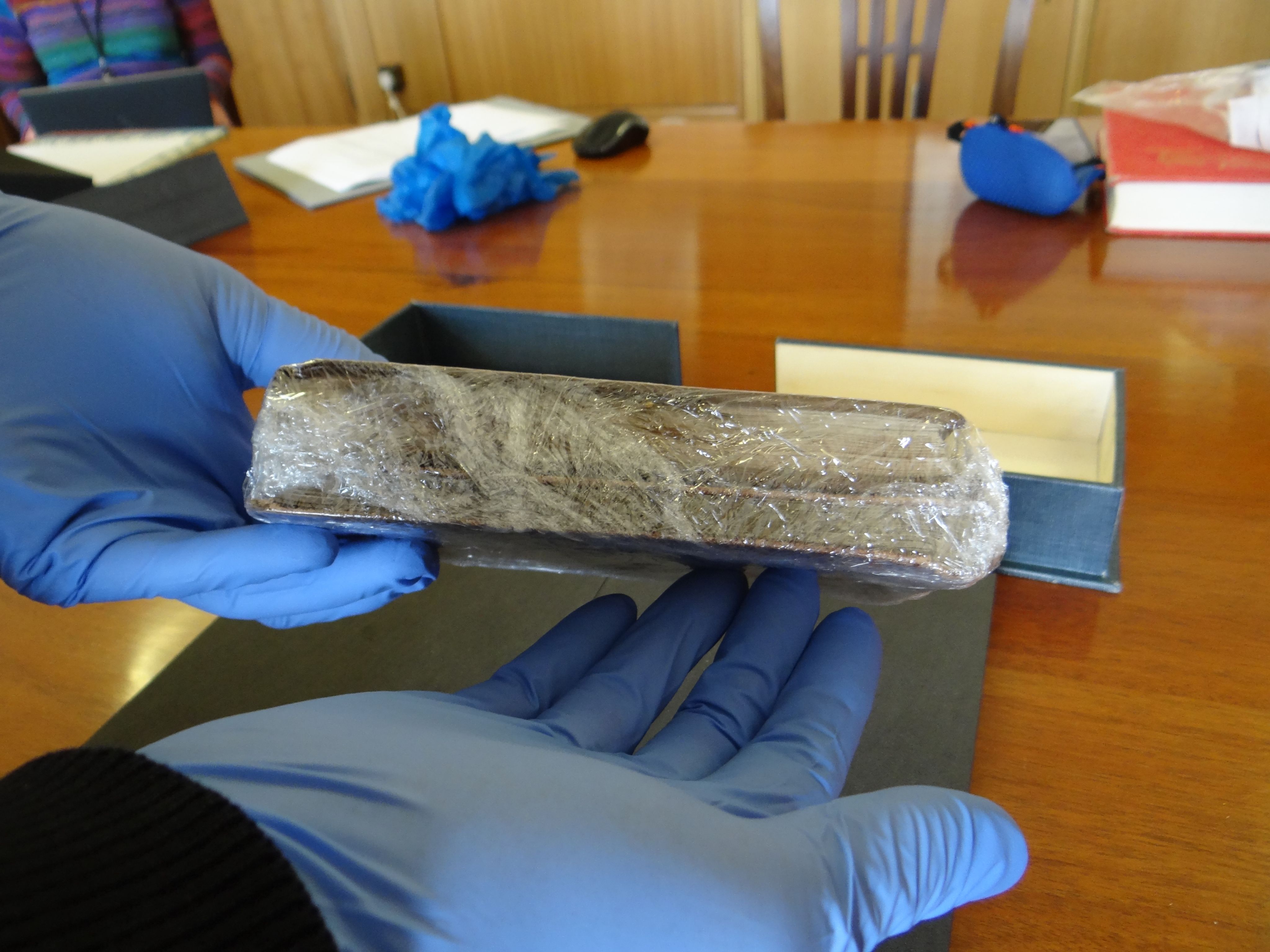
Jim Bloxam, Head of Conservation and Collection Care at the University Library, examines the still-wrapped notebooks at the start of the unwrapping and verification process. Photo: Stuart Roberts
Jim Bloxam, Head of Conservation and Collection Care at the University Library, examines the still-wrapped notebooks.
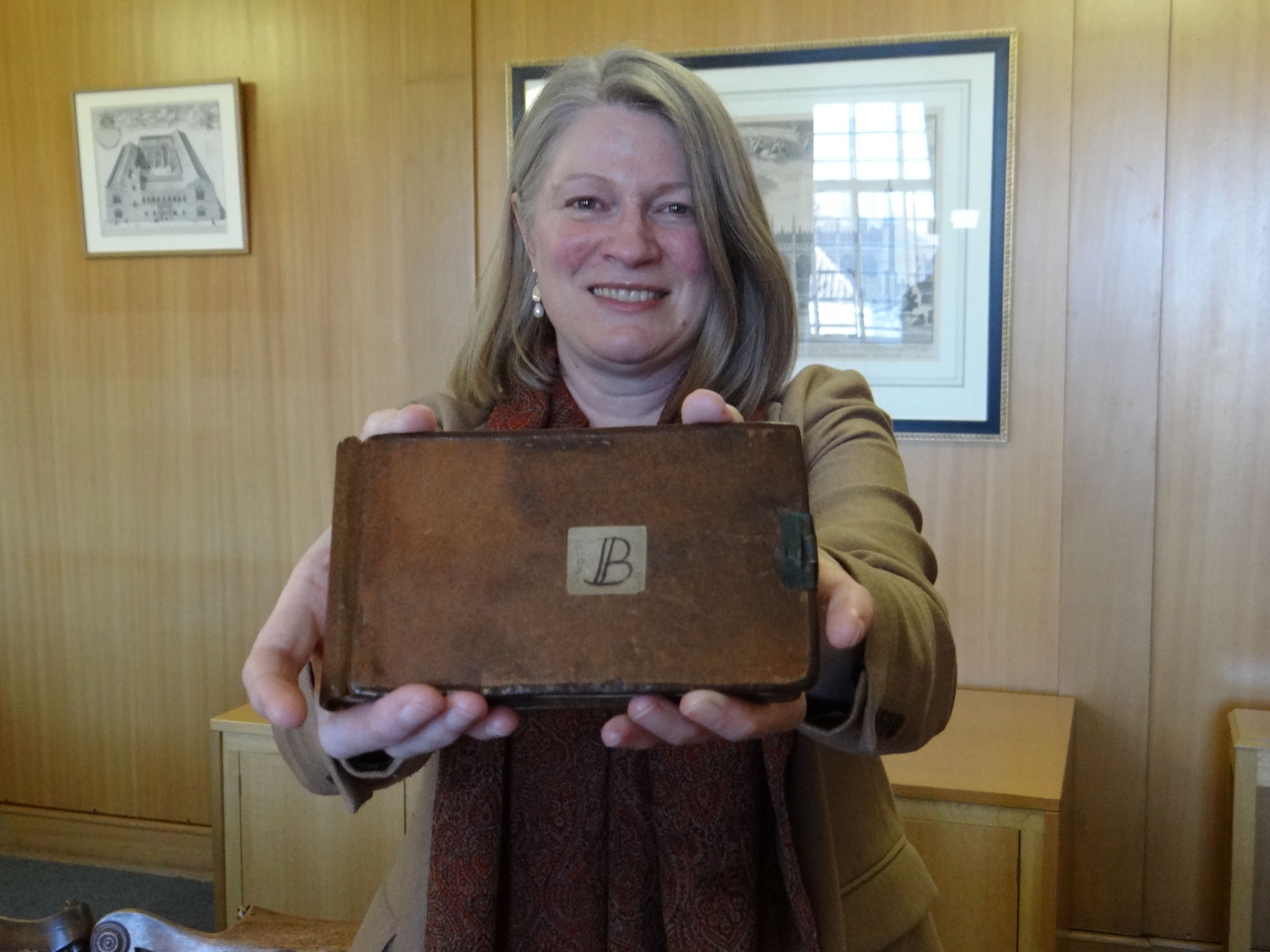
Dr Jessica Gardner with the 'B' notebook containing Darwin's Tree of Life sketch. Photo: Stuart Roberts
Dr Jessica Gardner with the 'B' notebook containing Darwin's Tree of Life sketch. Photo: Stuart Roberts
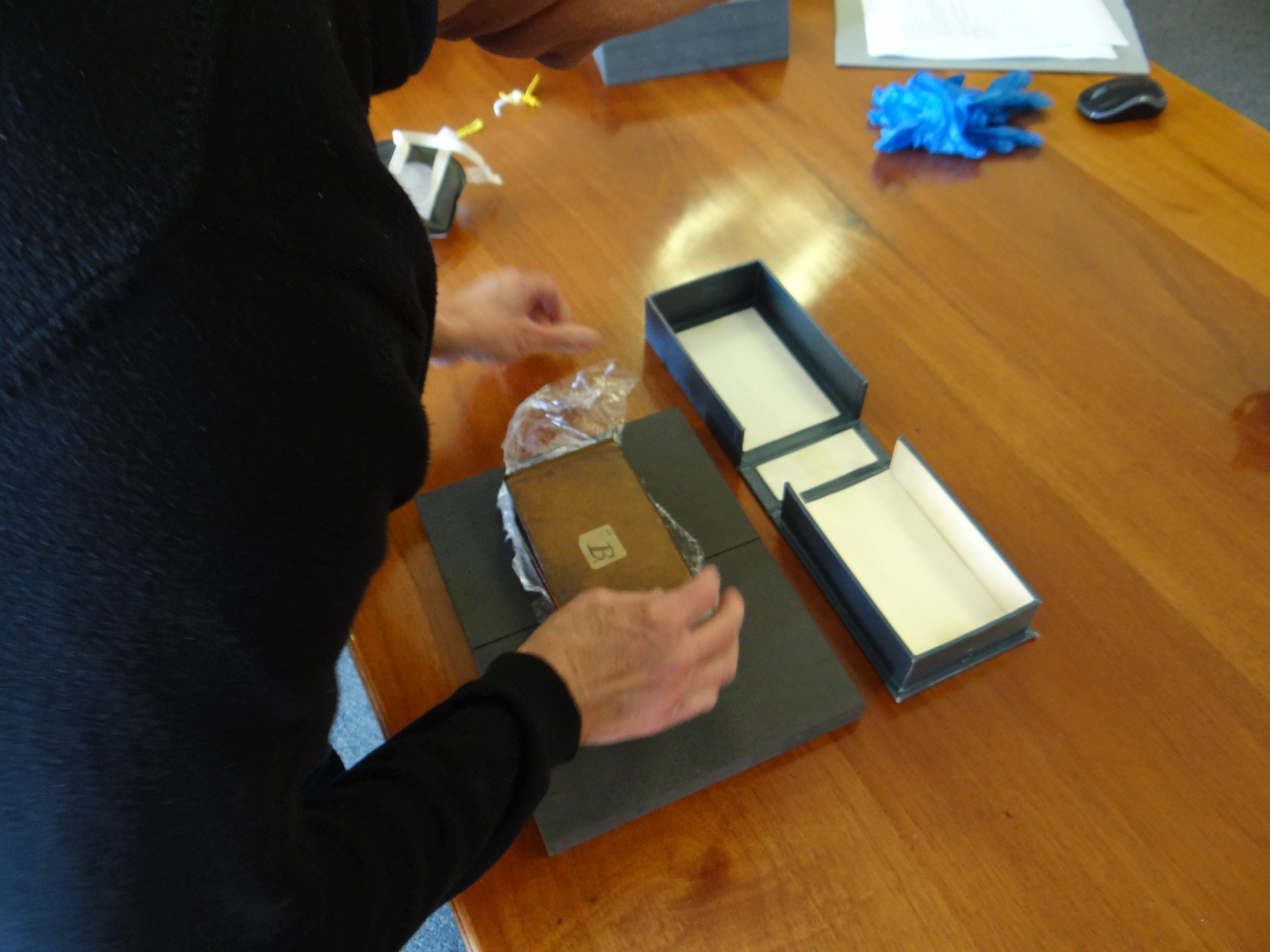
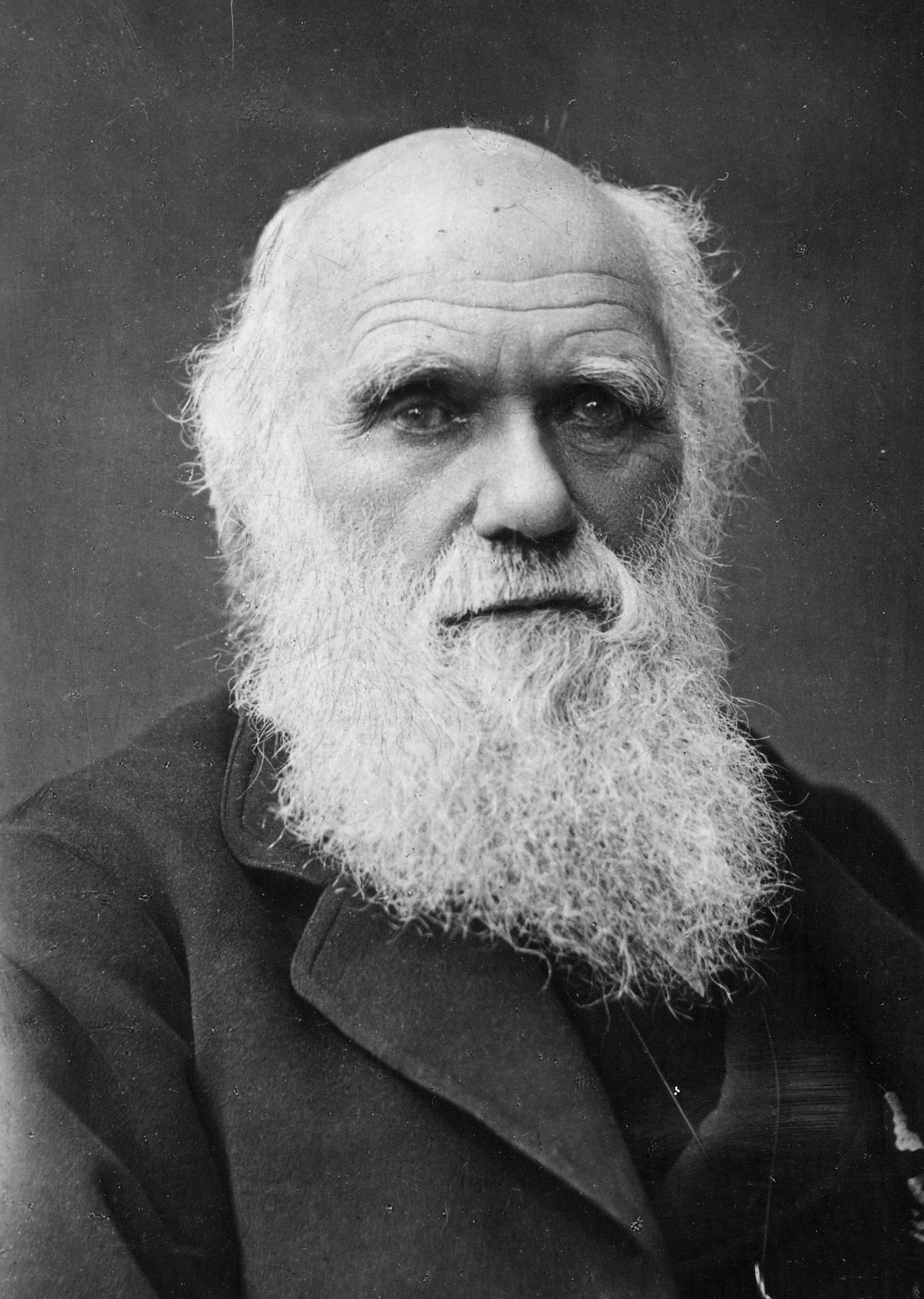
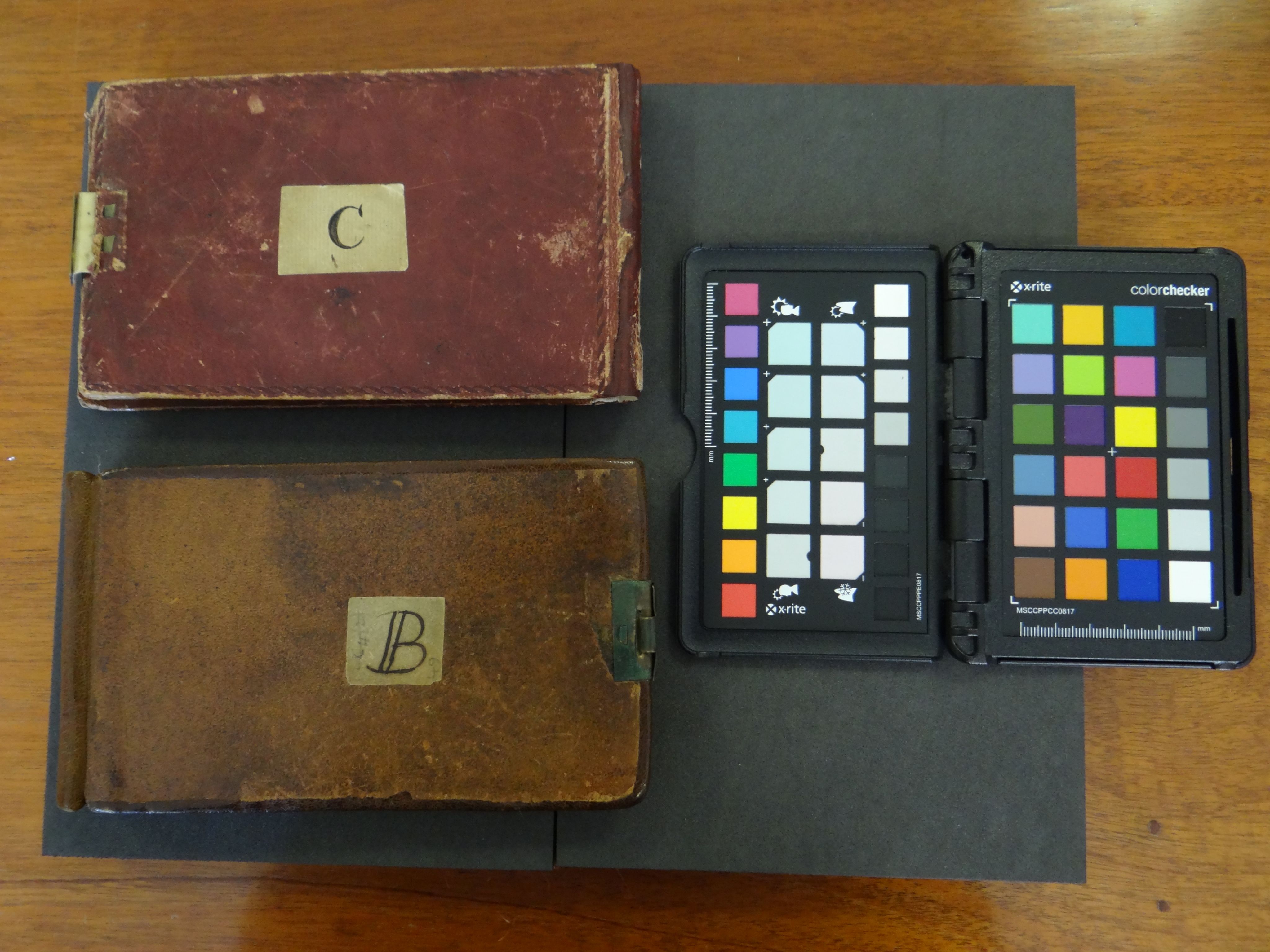
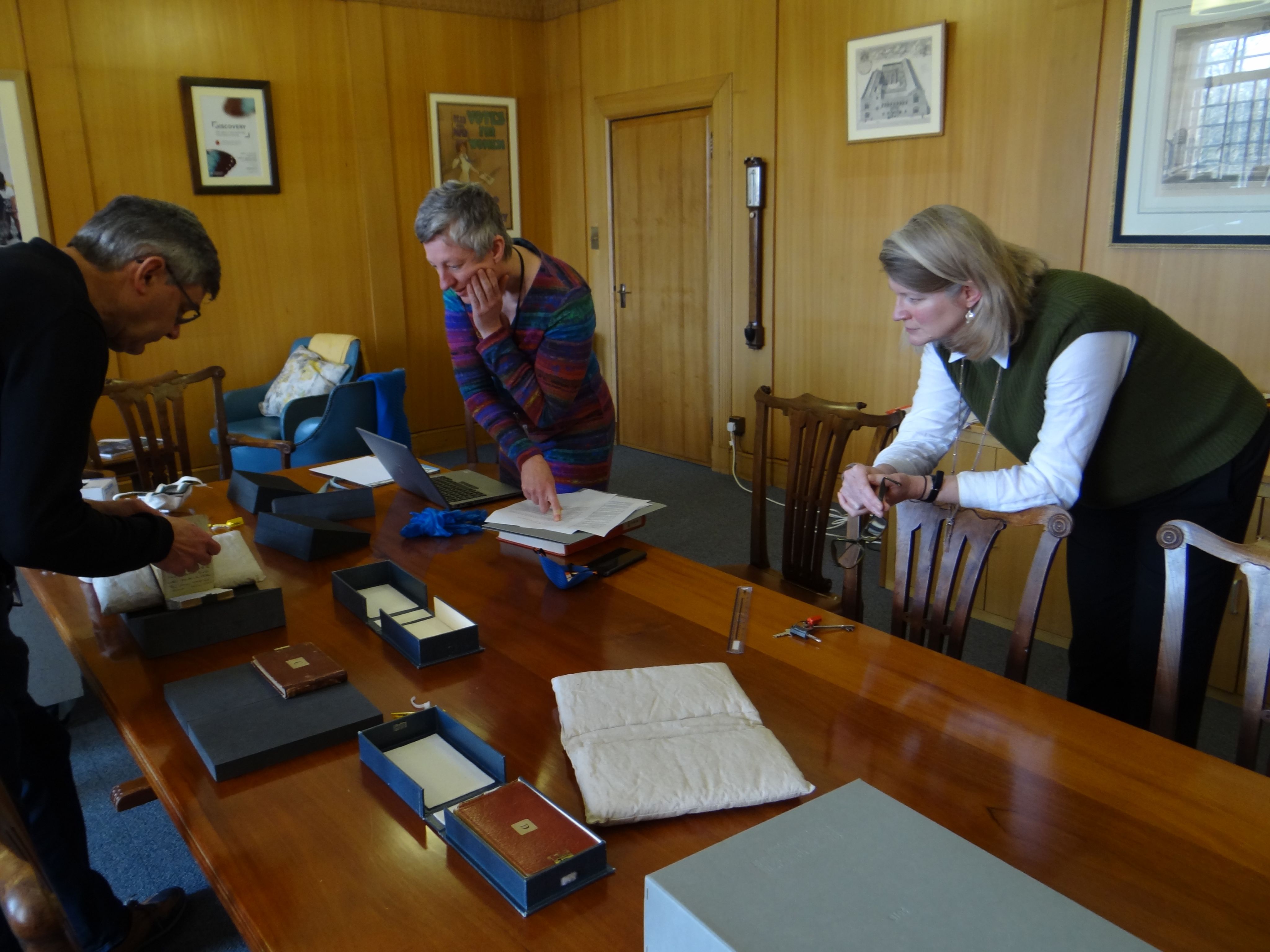

Jim Bloxam, Head of Conservation and Collection Care at the University Library, delicately opens the cling film wrapping that the notebooks were returned in.
Jim Bloxam opens the cling film wrapping that the notebooks were returned in.

Charles Darwin pictured in 1881.
Charles Darwin pictured in 1881.

Darwin's Notebooks B and C moments after being unwrapped at Cambridge University Library.
Darwin's Notebooks B and C moments after being unwrapped at Cambridge University Library.

Dr Jessica Gardner looks on as Dr Katrina Dean and Jim Bloxam check the notebooks against the extensive page-by-page records for them held at the University Library.
Dr Katrina Dean and Jim Bloxam check the notebooks.
"I am incredibly glad to hear of the notebooks’ safe return to their rightful home, alongside the rest of the University Library’s remarkable Darwin Archives.
"Objects such as these are crucial for our understanding of not only the history of science but the history of humankind. I’m delighted to learn that the notebooks will be going on public display this summer, giving visitors a once-in-a-lifetime chance to come face-to-face with Darwin’s Tree of Life sketch."
Professor Stephen J Toope,
Vice-Chancellor, University of Cambridge
A spokesperson for Type and Forme, the rare books specialists engaged as part of the process to officially verify the returned notebooks, said: "It is wonderful to see these notebooks, which are so fundamental to the development of Charles Darwin’s theory of evolution, reunited with Darwin’s other notebooks at Cambridge University Library, the world’s preeminent repository of Darwin’s correspondence and manuscripts.
"This successful conclusion to Cambridge University Library’s appeal for help – undertaken in collaboration with a range of partners in the fields of art security and rare books – will be applauded internationally."
Angus O'Neill, Security Chair for the International League of Antiquarian Booksellers, said: "The international book trade is thrilled and delighted that these wonderful notebooks are back where they belong, and openly accessible once again as such an important part of the world’s cultural heritage."
The return of the missing notebooks comes ahead of the launch of a major exhibition of Darwin material at Cambridge University Library this summer.
Darwin in Conversation is the first major exhibition to explore Charles Darwin’s life and work through his vast global network of correspondents – from eminent scientists to pigeon fanciers and gardeners. It will open at Cambridge University Library in July, before transferring to the New York Public Library in 2023.
The exhibition has been curated using the 15,000 letters Darwin wrote during his lifetime, the majority of which are housed at the University Library in Cambridge in the largest archive of Darwin-related material anywhere in the world.
The exhibition, which is free and open to all, draws on the 40-year mission of the Darwin Correspondence Project, also based at the Library, which since the 1970s, has worked tirelessly to transcribe and publish in print (and now digitally), every surviving letter that Charles Darwin wrote and received. The 30th and final volume of correspondence is published in 2022 and will coincide with the exhibition in marking the end of one of the largest and longest-running humanities projects anywhere in the world.
Darwin in Conversation shows how Darwin was the ultimate gatherer of information, seeking out anyone whose ideas, knowledge or insight might shape the naturalist’s own views, from members of the public and subject specialists all over the world, to some of the most famous names of 19th century science.
The exhibition will also dispel the myth of Charles Darwin as a lone theoretician sitting in Down House. Experiments and interaction with a wide range of people were key to his world-changing discoveries and theories, and the exhibition reveals Darwin as a complex individual whose ideas changed over time, informed as much by the frustrations of failure as the triumphs of success.


